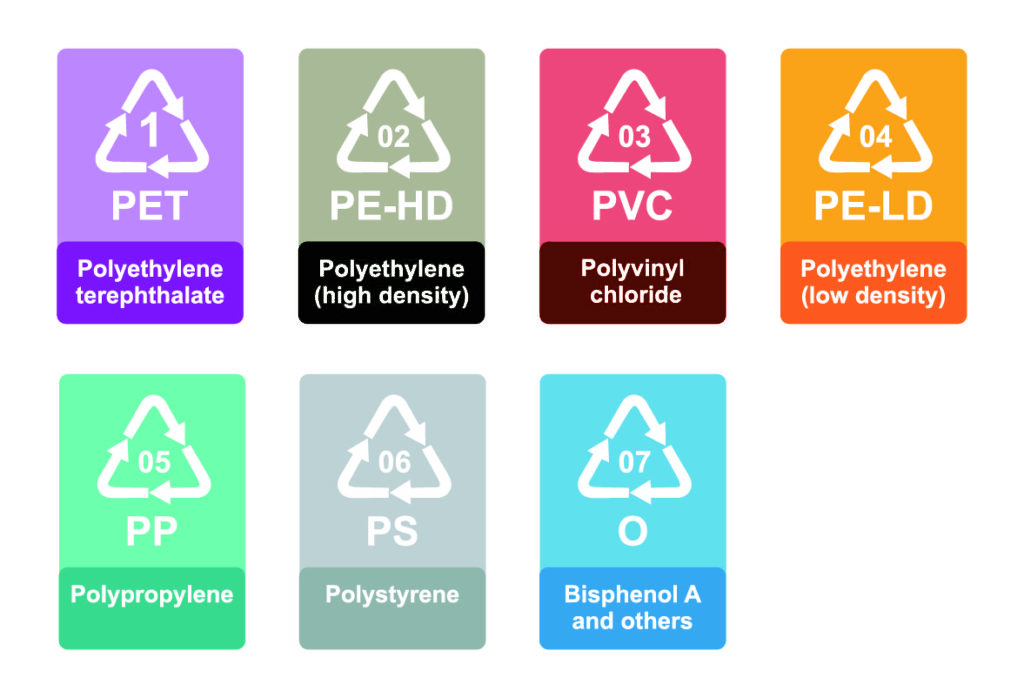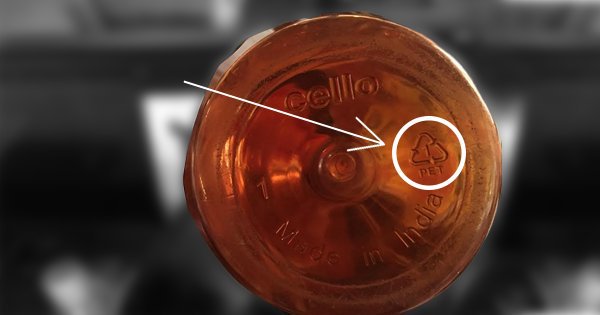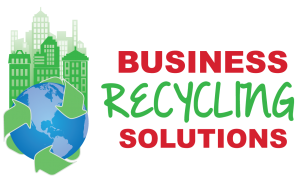We’ve all been there. Looking curiously on the bottom of our water bottle or milk carton thinking, what the heck does that number mean? It has the recycling symbol so it must be recyclable right? In reality, those recycling symbols don’t always mean that it is recyclable. The numbers reveal the true meanings and they are NOT all recyclable. In fact, some of the chemicals used in certain plastics are so toxic that it is illegal to recycle it because it will release emissions harmful to our environment. Resin Identification Codes range from 1-7 and each number breaks down what you can and cannot recycle.
 Plastic No. 1(PETE or PET)
Plastic No. 1(PETE or PET)
- Recyclable – PET stands for Polyethylene Terephthalate. PET is commonly found on items such as water bottles, cups, shampoo and conditioner bottles and mouthwash. It can be recycled repeatedly however, according to ABC Science, the longer a liquid is left in a PET container, the greater chances Antimony Trioxide (used as flame retardant or catalyst) is released. Have you ever left a water bottle in your car or store them in your basement? Did it taste like plastic once you tried to drink it? This is why. It’s better to just recycle the plastic instead of reuse the plastic bottles to avoid bacterial growth.
Plastic No. 2(HDPE)
- Recyclable – HDPE stands for High-Density Polyethylene. This another common plastic used for milk jugs, yogurt, refillable plastic bottles, toys, detergent bottles, plastic crates/buckets etc. This is one of the safer plastics that has a lower chance of releasing toxic chemicals and is safe for reuse. According to Natural Home Brands, recycling #2 plastic helps create new pens. Fireworks, recycling containers, lumber, fencing, water pipes, detergent bottles and more.
Plastic No. 3(PVC)
- Not Recyclable or Difficult to Recycle – PVC stands for Polyvinyl Chloride but I’m sure you’ve most commonly heard of PVC pipe. Plastic #3 is used for items like PIPES, children’s toys, saran wrap and shower curtains. PVC is a soft and flexible plastic. It contains numerous toxins which it can leach throughout its entire life cycle, which is why it is not recyclable. Some recycling centers may take it but it is rare. This plastic is mostly recycled in Europe.

The lack of recycling for all plastics is what leaves landfills and oceans full of plastic that pollutes the oceans and landfills.
Plastic No. 4(LDPE)
- Difficult to Recycle – LDPE stands for Low-Density Polyethylene. LDPE is typically used for plastic bags, six pack rings, dispensing bottles and body wash bottles. Not usually recycled through curbside recycling due to specific equipment needed to recycle this plastic but there are a few outside recycling centers who recycle this plastic so check around your local centers.
Plastic No. 5 (PP)
- Recyclable – PP stands for Polypropylene. PP is a low hazard plastic used for yogurt containers, medicine bottles, plastic bottle caps and straws. You can reuse this plastic and recycle it. Check with your recycling program to see if they take this form of plastic.
Plastic No. 6 (PS)
- Not Recyclable or Difficult to Recycle – PS stands for Polystyrene. From the word, you can see it sounds like Styrofoam which is what this plastic makes. This is a common plastic for plastic plates and cutlery, Styrofoam or take out boxes, egg cartons, foam peanuts, etc. This plastic is a hazard and is found to leach styrene, a possible human carcinogen, into food products (especially when heated in a microwave). It can be recycled but it extremely rare and are typically only at outside recycling centers. A lot of recycling center will not recycle this plastic.
Plastic No. 7 (MISC)
- Difficult to Recycle – The miscellaneous plastic is for any other toxic plastic and typically includes plastics with BPA in it. Most #7 plastics are not recyclable because they can leach chemicals that cause health risk. There may be certain recycling centers that take this plastic but most won’t due to the harmful effects it would have on the environment and people. Items like sunglasses, water bottles and baby bottles contain this plastic.

When buying items in plastic it is always best to check what form of plastic it is and avoid any that are hard to recycle. When buying or using plastic it is always best to not heat plastic up. Heating plastic is usually the cause of releasing those harmful chemicals. Avoid plastic tupperware and cups. Glass is always the safer option, free of harmful chemicals and long lasting. When cooking, Wooden or Bamboo cooking utensils are safer also due to the heating of plastic when cooking. The lack of recycling for all plastics is what leaves landfills and oceans full of plastic that pollutes the oceans and landfills. Now that you have the information, how can you make it better?

